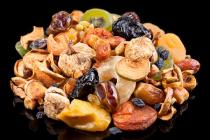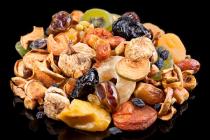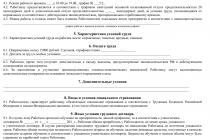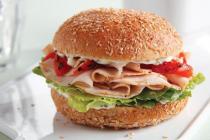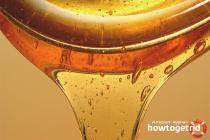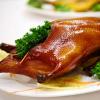Drying vegetables and fruits is an old way of preserving them. Previously, to preserve food, they used a lot of salt and dried it in the sun or on gas burners.
Now there are special dryers that help in this process.
Drying vegetables and fruits, as well as berries, is a safe method of preserving them because the water is removed from them. And since there is no water, mold and bacteria will not appear on them, and thus they will not spoil.
Choosing the right drying method
Sun drying
This is quite difficult to do because it requires 3 consecutive sunny days with at least 37°C.
Oven drying
Oven drying is a suitable method, but it does not save energy and results in food losing flavor. If your oven does not heat up to 93°C, you can try another drying method. The oven door should be kept slightly open to allow air circulation throughout the process.
Electric drying
This is the best method for drying food. Electric drying is quite energy efficient and can operate at the low temperatures necessary to preserve the nutritional value of food. An electric food dryer should have heat control and a fan to create air circulation.
Drying process of fruits and vegetables
When drying food, do not keep the temperature too high or too low. Low temperatures can cause bacteria to grow on food. Too high a temperature will bake the food instead of drying it out.
Under-dried foods will spoil, and over-dried foods will lose their flavor and nutritional value. Products must be dried at a temperature of 49–60 °C. You can start drying at high temperature, and after an hour reduce it. During the last hour of drying, the temperature should be set to minimum. Products should be turned over and trays rotated throughout the entire process.
You can tell when drying is complete by touching the food; it should be firm and without pockets of moisture. When testing fruit, you can break a piece in half. Streaks of moisture along the break will indicate that the fruit is not yet dried. The pulp should be dense and should not crunch. Vegetables may be tough and crunchy.
When storing dried foods, remember to keep moisture out of the containers.
Dried foods absorb moisture from the air, so storage containers must be airtight. Some suitable storage containers are jars and plastic freezer bags.
Fruit marshmallows are placed in cling film and stored in an airtight container.
Store containers of dried food in a cool, dark and dry place, preferably at 16°C.
Guide to Drying Vegetables
All vegetables except onions, peppers and mushrooms need to be washed, cut into slices and placed in water for a while. Vegetables are placed on a tray in one layer and dried. Depending on conditions, drying time may take longer. Vegetables are dried at a temperature of 55 °C.
Green beans
Peel and chop the beans into 2.5 cm pieces. Place in hot water. Dry for 6-12 hours until they become brittle.
Beet
Boil and peel the beets. Cut into 6mm pieces. Dry for 3-10 hours until they become stiff. Broccoli. Cut and dry for 4–10 hours.
Carrot
Peel, slice or chop. Dry for 6-12 hours until brittle.
Cauliflower
Cut and dry for 6–14 hours. Corn. Clean the kernels from the cob after blanching and dry for 6-12 hours until brittle.
Mushrooms
Brush but do not wash. Dry at 32°C for 3 hours and then at 52°C for the remaining time. Dry for 4-10 hours until brittle.
Onion
Slice the onion into 1-inch thick rings. Dry for 6 to 12 hours until crisp.
Peas
Dry for 5-14 hours until brittle.
Bell pepper
Remove seeds and cut into pieces. Dry for 5-12 hours until hard.
Potato
Cut into circles 3 mm thick. Dry for 6-12 hours until crisp.
Tomatoes
Place in boiling water to separate the skin, peel, cut into circles or divide into 4 parts. Dry for 6-12 hours until crispy.
Zucchini
Cut into 3mm thick circles and dry for 5-10 hours until brittle.
Guide to Drying Fruits

All fruits should be washed, pitted and cut into circles or slices. Place in a single layer on pallets. Dry fruit at 57°C. You can pre-treat the fruit with lemon juice or ascorbic acid. They will not darken while you are preparing them to dry. Cut the fruit into slices or circles and soak in water for 5 minutes.
Apples
Peel, remove the seed and cut into 9mm rounds or 6mm slices. Pre-treat and dry for 6-12 hours until soft and pliable.
Apricots
Cut in half and turn inside out. Pre-treat and dry for 8-20 hours until soft and pliable.
Bananas
Peel, cut into 6mm thick slices and pre-process. Dry for 8-16 hours until soft and pliable or almost crisp.
Blueberry
Dry for 10-20 hours until hard. Cherry. Cut in half and dry for 18-26 hours until stiff and slightly sticky.
Peaches
Peel the skin and cut in half or quarters. Pre-treat and dry for 6-20 hours until soft and pliable.
Pears
Peel, cut into 6mm thick pieces and pre-cook. Dry for 6-20 hours until hard.
A pineapple
Remove the core and cut into 6mm thick rounds. Dry for 6-16 hours until stiff and non-sticky.
Strawberry
Cut in half or into 6mm thick slices. Dry for 6-16 hours until soft and pliable or almost crisp.
More details about drying some vegetables, fruits and apples:

Dried eggplant
In August, the season of ripening vegetables, in Eastern countries almost everywhere you can find hanging garlands of eggplants and peppers, which are dried so that in winter you can prepare a lot of tasty and healthy dishes without buying tasteless and expensive winter vegetables.
Depending on what the housewife plans to cook, the eggplants are cut into halves for dolma, strips or cubes for soups, stews and pilaf.
In Eastern countries, as already written above, vegetables are dried in the sun, because... firstly, gas or coal for stoves are not cheap, secondly, it’s too hot outside to still heat the kitchen with gas or light the stove. Thirdly, with such heat and sun, it’s somehow stupid to waste resources and create unnecessary complications for yourself .
And so, for drying, the eggplants are washed and the stalks are removed.
For dolma, this is the most popular type of cutting.
The eggplants are cut in half, then the pulp is carefully cut out of them; the walls of the resulting “cup” should not become thinner than 0.5 cm.
Then, using a gypsy needle and a thick thread, the eggplant halves are strung on a thread at a short distance from each other; if you string it too tightly, the eggplants will begin to rot.
Dry eggplants either in a dry, ventilated room, or outside under a canopy, or on a balcony, so that they are not exposed to direct sunlight.
Otherwise, in the sun, the eggplants will burn out and lose their taste.
In rainy weather and at night, garlands with eggplants are put away in the house.
If there are a lot of flies, cover the eggplants with gauze.
Eggplants are dried for about 3 weeks. And then stored in a dry place.
Nowadays eggplants do not taste bitter and almost no one bothers with pre-processing eggplants.
In addition, before use, dried eggplants are brewed in boiling water, so preliminary heat treatment, in my opinion, is not necessary.
Sometimes, after drying, the finished eggplants are placed in a large saucepan or tank, or bucket and covered with a lid, it is believed that in this way the moisture of the dried and under-dried vegetables is distributed evenly.
In our conditions, you can dry eggplants in the same way - on the balcony or on the street, or in the oven (gas is not so expensive here). To do this, eggplants are cut into halves, strips or small pieces.
Then they are laid out on a baking sheet in one layer. The baking sheet is placed in the oven for 3-4 hours. Preheat the oven to 100 C and no higher than 150. The door should be ajar about 5-10 cm.
During drying, the pieces must be turned over or mixed to ensure uniform drying.
Sometimes they are dried in several stages.
Dry for an hour, then cool. Drying hour - cool until the eggplants are as dry as mushrooms.
Store in boxes or jars. And the garlands are hung in a dry room, or stored in a bag.
Apples
The best fruits for drying are considered to be the fruits of the varieties Naliv white, Breading, Borovinka pineapple, Melba, Autumn striped, Pepin saffron. Of the new varieties, those immune to scab, obtained at the All-Russian Research Institute of Fruit Crop Breeding, are recommended, since almost all of them have a high content of dry matter: Bolotovskoe, Solnyshko, Stroevskoe, Venyaminovskoe, Start, etc.
Apples should have dense flesh that does not darken much in the air, and thin skin.
The fruits are sorted, washed, allowed to drain, cut Apples into circles 0.5-0.6 cm thick, removing damaged areas and the seed chamber, and immediately immerse for 3-5 minutes in a solution of citric acid (2 g per 1 liter water) or table salt (1 tsp per 1 liter of water) so as not to darken (do the same with pears). Then the water is drained, the apple circles are air-dried for 2-3 minutes, placed in one layer on a sieve or baking sheet covered with white paper, or strung on twine. The initial temperature in the dryer should be 70-85°C.
To speed up drying, apple mugs (if the apples are small, cut them into halves, quarters, or use whole) are turned over after 2-3 hours.
When the fruits lose about 2/3 of their moisture, the temperature is reduced to 50-55°C. The entire drying process lasts approximately 5-6 hours and is considered complete if the mugs or slices are not crushed under strong finger pressure. Undrained apples are removed from the baking sheet or sieve and dried again. Ready apples are kept in a box or crate for a week to equalize humidity. Well-dried apples should be supple and light cream to light brown in color.
Pears
Summer and autumn varieties containing at least 12% dry matter are suitable for drying. The fruits should be ripe, with a small content of stony cells. It is recommended to use Bessemyanka, Tonkovetka, Autumn Bergamot, Summer William and others, as well as wild pears.
The fruits, depending on their size, are cut into halves or quarters (small ones are dried whole) and dipped in acidified or salted water. After the water has drained, the slices are placed on sieves or baking sheets and dried for 10-12 hours, first at 70-80°C, and finally at 50-55°C. Ready pears are kept in a box or box for 5-6 days to equalize humidity.
Plums
The best varieties for drying are Hungarian and other large-fruited dark purple plums. It is from them that prunes are obtained. In the middle zone, unfortunately, there are no such varieties. However, you can dry plums of other varieties.
Plum fruits, like cherries, should be large, fleshy, with a small pit that can be easily separated from the pulp. Fruits damaged by the codling moth are not suitable for drying. Before drying, plums are sorted by size, the stalks are removed, then they are washed and always blanched by dipping them into a boiling solution of baking soda for a few seconds (5-8 g per 1 liter of water). After this, the plums are immediately cooled in water and washed under running water. Thanks to these actions, the waxy coating is removed, and a mesh appears on the plum skin, which speeds up drying.
Blanched plums are placed in one layer on a baking sheet and dried in three steps. First, 3-4 hours at 40-45°C, after which they are removed from the dryer or oven and kept for 4-6 hours. The second drying at a temperature of 60-65°C lasts 6-8 hours, the plums are turned over on a baking sheet and cooled again for 4- 5 hours. The third, final drying lasts 4-5 hours (until ready) at a temperature of 70-75°C. Ready plums do not release juice when pressed and have dry pulp near the seeds. Dried plums are also kept in a box for 5-6 days to equalize the humidity.
Cherry
The best varieties for drying are Vladimirskaya, Griot Ostgeimsky, Black Consumer Goods, Zhukovskaya, Turgenevka, etc. The fruits must be fully ripe and dark red in color. They are sorted, damaged or diseased ones are removed, as well as the stalks, washed, placed in one layer on baking sheets and dried in one step for 10-12 hours, first at 50-55°C, then at 70-75°C. Cherries, like plums, can be blanched.
Rose hip
Ripe, hard to the touch, bright red rose hips are suitable for drying. It is sorted, overripe, damaged and soft fruits, stalks and inflorescences are removed, washed, allowed to drain, placed on a baking sheet and placed in an oven heated to 100°C for 8-10 minutes. Then they are poured onto another baking sheet or sieve and dried at 65-70°C. Rose hips dried in this way contain a large amount of vitamin C.
Various berries
Raspberries, blackberries, blueberries, lingonberries, cranberries, black currants and other berries are also dried. They are sorted out, rotten and damaged ones are removed, and cleaned of twigs, leaves, and stalks. Berries with thick, dense skin (cranberries, black currants) are blanched before drying. The prepared berries are laid out on sieves in a thin layer and dried in the sun for one day, then 2-4 hours in a drying cabinet, depending on the type and size of the berries. The temperature in the drying cabinet is 45-50°C. The dried berries are placed in an open box and kept for two days.
Preparing dried foods for meals

Dried foods must be soaked or cooked before they can be used in recipes. Some foods need to be soaked and cooked. Vegetables are usually soaked for ½–1 ½ hours and then poached. Some vegetables can be reconstituted during cooking.
The fruits are soaked and then boiled in the same water. Do not add additional sugar until the fruit is cooked, otherwise it will be tough. The fruit is sometimes consumed dried as a snack. It must be remembered that after the products are reconstituted, they quickly deteriorate, so they need to be consumed quickly.
To prepare dried foods, use the following information and simmer until softened.
Apples: add 1 ½ cups warm water per 1 cup apples and soak for ½ hour.
Green beans: 2 ¼ cups boiling water to 1 cup beans and soak 1 ½ hours.
Beet: 2 ¾ cups boiling water to 1 cup beets and soak 1 ½ hours.
Carrot: add 2 ¼ cups boiling water to 1 cup carrots and soak for 1 hour.
Corn: Add 2 ¼ cups boiling water to 1 cup carrots and soak for ½ hour.
Onion: Add 2 cups boiling water to 1 cup onion and soak for 1 hour.
Peaches: Add 2 cups warm water to 1 cup peaches and soak for 1 ¼ hours.
Pears: Add 1 ¾ cups warm water to 1 cup pears and soak for 1 hour.
Peas: Add 2 ½ cups boiling water to 1 cup peas and soak for ½ hour.
Potato: Add 1 ½ cups boiling water to 1 cup potatoes and soak for ½ hour.
RECIPES:

Sun-dried tomatoes are something unimaginable: inconspicuous at first glance, they perfectly retain the concentrated taste and aroma of summer tomatoes, simultaneously acquiring new, unexpected and slightly piquant notes.
In Italy, whose San Marzano tomatoes are considered perhaps the best in the world, tomatoes are dried in the summer, under the scorching Mediterranean sun. However, in the absence of the Mediterranean sun, the most ordinary oven can come to the rescue - well, sun-dried tomatoes, which will be stored for at least a year without problems, can be used in dozens of ways: added to bread, salads, pasta, sauces, and simply eaten as very tasty snack, remembering summer.
Ingredients:
1 kg. plum tomatoes; olive oil; garlic; dried herbs; hot pepper; salt
Wash the tomatoes thoroughly and cut each of them lengthwise. You can remove the seeds and all the liquid so that the tomatoes dry faster and more evenly, but you don't have to do this to preserve the maximum flavor of summer tomatoes (however, it is better to remove the place where the tomato is attached to the branch and the white pulp around it anyway ). Line a large baking sheet with parchment paper and arrange the tomatoes cut side up so they are not touching.
In order not to wait for the tomatoes to be ready, you can dry them with the oven open. (See “drying eggplant” above). Then dry it in the sun, perhaps on a towel, covered with gauze.
Please note that the time indicated above is a guideline, and readiness must be determined by the appearance of the tomatoes. If the tomatoes have shriveled, acquired a darker shade, and the moisture has “gone away,” it means they are ready. In order not to miss this moment, you need to periodically look into the oven, and some time before the end, turn the baking sheet 360 degrees so that all the tomatoes dry evenly.
Now a few words about storing sun-dried tomatoes. Traditionally, tomatoes are placed in a jar and poured with olive oil. You can add a little finely chopped garlic, dried herbs, hot chili, wine vinegar, salt, pepper and other spices to the oil so that the sun-dried tomatoes gradually acquire an additional dimension of taste and aroma during storage. On the other hand, you can do it simpler - put the tomatoes in a container with a lid (or the same jar) and close it tightly: this way they are also stored well, and, importantly, retain their original taste.
On a note! In the East, tomatoes are dried in the sun and stored on strings.on oiled string (like garlands) hanging in the pantry or in a paper bag. So, if you don’t want to store it in oil, then choose this method. Before use, dried tomatoes should be kept in warm water and cut into a dish as you like. It is better to put tomatoes on shurpa (oriental soup with potatoes and vegetables) or roast without cutting them.

The meat is dried at a temperature of 63–66 °C. The meat is dried for 6–20 hours until it becomes soft and pliable. It shouldn't be brittle. Skim the fat layer off the jerky while drying. Jerky should not be stored as long as fruits and vegetables. For long-term storage (more than a month), it should be stored in the freezer or refrigerator.
To age the jerky, it can be marinated with salt and spices. Previously, they used 1 ½ cups of marinade salt per 4 liters of water and soaked strips of meat in it for two days.
An alternative to soaking was also to rub the meat with salt and spices (garlic and pepper) before drying.
You can use one of the following marinade recipes: Leave the strips of meat in the marinade overnight.
Drying marinade No. 1: 2 tbsp Worcestershire sauce ¼ cup soy sauce ½ tsp minced garlic ½ tsp pepper 1 tsp salt 1 tsp liquid smoke
Marinade for drying No. 2: 1 tsp pepper 4 tsp salt 1 tsp ground garlic 1 tsp chili powder ½ cup water 1 tsp liquid smoke Curing Marinade No. 3 ½ cup vinegar 1 cup ketchup 3 tbsp Worcestershire sauce ¼ cup brown sugar 1 tsp salt 2 tsp dry mustard ½ tsp pepper.
Recipes for dried fruits and vegetables
Apple pie
Ingredients: 3 ½ cups dried apples; 2 cups of water; ¾ cup sugar; 1 tsp cinnamon
Boil the apples until softened. The apples will recover as they cook and bake. Add sugar and cinnamon. Fill out the pan, cover the top of the pie and bake for 30 minutes at 177°C.
Cherry pie
Ingredients: 3 cups dried cherries; 3 cups boiling water; ½ cup flour; 1 cup sugar.
Pour water over the cherries and soak for 30 minutes. Simmer and add sugar and flour to thicken. Pour into pan and bake until crust forms. Bake at 204°C for 35 minutes.
Peach Pie
Ingredients: 3 cups dried peaches; 3 cups boiling water; 2/3 cup flour; 1 cup sugar; 2 tsp cinnamon; ¼ tsp nutmeg
Pour water over the fruit and soak for 30 minutes. Simmer and add sugar and flour to thicken. Pour into a greased baking dish and garnish on top. Bake at 204°C for 30 minutes.
Corn puree
Ingredients: 1 cup dried corn; 4 cups boiling water; 2 tsp sugar; ½ cup milk; 1 tbsp flour; 1 tbsp margarine; Salt and pepper to taste
Place the corn in water and leave for 30 minutes. Simmer until corn is soft. This may take 1 hour. Drain and add remaining ingredients. Cook for another 5 minutes, stirring frequently to prevent burning.
Cream of mushroom soup with green beans
2 cups boiling water; 1 cup dried beans; 1 can canned cream of mushroom soup
Place the beans in water and cook until softened. Add the puree soup and simmer.
Tomato puree soup
Ingredients: 1 tsp/l dried crushed tomatoes; ½ cup boiling water; 1 tbsp flour; ½ cup milk
Grind the dried tomatoes in a blender or food processor. Add this powder to water and simmer. Combine flour with milk and mix. Add this mixture to the water with tomatoes. Simmer, stirring to prevent burning.
Boiled fruits
3 cups dried fruit of your choice; 2 cups boiling water; 1 tsp cinnamon; Sugar to taste
Soak the fruit in boiling water for 20 minutes. Simmer for 20 minutes, then add cinnamon and sugar. Stir until the sugar dissolves and serve.
Vegetable soup
1 cup cooked meat, diced; 3 cups mixed dried vegetables; Salt and pepper
Pour boiling water over the dried vegetables and soak for 1 hour, then simmer for 2 hours until they are soft. You can add fresh vegetables if you don't have what you need.
Apple dessert: marshmallow

- this is not a plasticine mass packaged in cardboard boxes, but a delicate, soft ancient Russian dessert that our ancestors owned back in the 15th century. Marshmallow was common wherever sour varieties of apples were found. “Branded” cities: Rzhev, Tula, Belev, but the best was produced in the city of Kolomna. At least that's what the residents of this city, where the marshmallow museum is located, think. As part of the excursion, they not only tell you about the peculiarities of its preparation, generously flavoring the story with legends, but also give you a chance to try different types of marshmallow. So if you are a true fan, then it is worth visiting the sweet Mecca.
Don’t think that marshmallows were kneaded in every yard. It was a very complex and labor-intensive process: pastil workers in artels whipped it for two or three days without stopping in several shifts. And it was very expensive: about 1.50 rubles per 1 kg. For comparison: a loaf weighing 400 g cost 4 kopecks, and a kilogram of chicken cost 80 kopecks (average prices in the country).
The basis of the marshmallow is sour apples: Antonovka, Titovka, wild varieties. They were poorly distributed in the warm climate of Western Europe, so there was no marshmallow there. The idea of the recipe is based on the fact that fruit raw materials, rich in natural pectins, which have the ability to gel quickly and efficiently, are brewed until a puree is formed, and then honey is added to it. This ingredient was replaced with sugar in the 19th century, and therefore marshmallow became much more accessible, and it even began to be exported to the West. An important component of marshmallow is egg whites, which give the sweetness its white color. The classic marshmallow was red, so when Kolomna confectioners received white marshmallow, it remained a curiosity for some time.
To prepare the marshmallow, mix all these ingredients and beat until the mass doubles in volume. Then it is poured into a mold, but in the old days it was simply spread in a thin layer on a fabric stretched over a wooden frame like a hoop. That is why it was called “postila” - something that needs to be “bedded”. The pastila needs to be dried for two days at a low temperature. Of course, this was much easier to do in a Russian oven than in a modern apartment, but there are housewives who still prepare marshmallows at home today, although more often the choice is made in favor of the factory-made version. The last stage is to cut the marshmallow into even pieces and sprinkle with powdered sugar.
Apple marshmallow without sugar

Peel apples of any degree of ripeness, cut into slices, place in a saucepan, add a little water to the bottom, cover with a lid and boil over low heat, then cool and rub through a colander. Grease the surface of the kitchen board with a very thin layer of vegetable oil and rub it in thoroughly with a dry gauze swab. Spread the applesauce on the board in an even layer (no thicker than 0.8 mm - otherwise it will take a long time to dry) and place it in the sun or draft. On the second day, when the puree dries a little, the board can be placed at an angle.
After three days, pry the dry marshmallow with a knife and remove it from the board. This “apple napkin” then needs to be hung on a rope for 2 days. For long-term storage, fold the marshmallows into a stack, sprinkle them lightly with powdered sugar, roll them tightly into a roll, put them in a plastic bag and place them in the refrigerator.
(in the oven)

For 1 kg of apples - 200 g of sugar.
Wash the apples, remove the core and seeds, cut into small pieces, mix with granulated sugar, and place in a thick layer on a baking sheet. Do not add water. Place the baking sheet in the hot oven. After boiling, reduce the oven temperature. To prevent the mass from burning, stir it periodically with a spoon or spatula and cook until the mass becomes elastic and does not stick to the spoon. This usually takes 20 minutes after boiling.
Place the boiled mass on a sheet of foil or on a cold baking sheet sprinkled with granulated sugar, dry it at room temperature, sprinkle with granulated sugar and store in ordinary cardboard candy boxes in a cool, dry place.

For 1 kg of apple mass - 100 g of sugar.
Wash the apples, remove the core with seeds, cut into slices or circles, sprinkle with sugar, mix, place in an enamel pan, cover with a clean cloth, set pressure and let stand until the juice is released. Drain the resulting juice, place the slices on a baking sheet and place in the oven to dry. The oven should be heated to 65°C. Transfer the dried apple slices into dry glass jars or linen bags. Store them in a dry place at room temperature. The separated apple juice can be used to prepare compotes, or canned after boiling. While boiling, pour the juice into jars and roll up the lids. Dried apples can be served with tea, used as a filling for pies, or made into compote.

Everyone knows what candied fruits are. They are a pleasure to prepare and then store, like jewelry, in boxes and jars.
Today, candied vegetables and fruits are used everywhere: they are added to baked goods, jelly, ice cream and other dairy desserts, including cottage cheese, they decorate various confectionery products, in addition, slices of fruit boiled in syrup are sometimes served as an independent sweet dish for tea or coffee instead of sweets. Candied fruits serve as an excellent filling for muffins, rolls, and puff pastries.
In Rus', candied fruits have also been loved for a long time. Only they were called Kyiv dry jam or “balabushki”. The first mention of Kiev dry jam dates back to the 14th century. It was brought from Kyiv and served at the wedding feast of the Lithuanian prince Jagiello. In 1777, Catherine II issued a decree according to which dry jam from apricots, wild strawberries, strawberries, pears, dogwoods, cherries, Hungarian plums, rose hips and pink, so beloved by her, was supplied to the court. Every autumn, stagecoaches with boxes and boxes of Russian candied fruits departed from Kyiv to St. Petersburg. In the middle of the 18th century there was even a separate position - “candy apprentice of the Kyiv imperial court.”
The process of making candied fruits has not changed significantly since then. The fruits are thoroughly washed and dried beforehand. They are then dipped in rich sugar syrup and cooked for a long time. At the next stage, the fruits, thoroughly soaked in syrup, are dried, after which they become similar to what we can see in the store. There is nothing difficult about making candied fruits yourself. Any fruit, berries, citrus peel with zest, as well as some vegetables, such as pumpkin, carrots and zucchini, are suitable for this.
It is worth noting that candied vegetables and fruits also have a number of useful properties that many other confectionery products do not have.
Candied oranges and watermelons are very tasty, or rather, from their peels, which we usually throw away.
Candied watermelon rinds
Ingredients:
1 kg of watermelon rinds, 1 kg of sugar, 200 ml of water, 5 g of citric acid, orange zest, almonds, lemon zest, vanilla - to taste.
Preparation:
To prepare candied fruits, use watermelons with a thick rind, as well as unripe melons, which are usually thrown away as inedible products; in this case, they will be very useful to you. Peel the watermelon rinds from the thick rind and soft part, cut into pieces of the same size, keeping in mind that they will boil down later, add water and cook for 3 minutes. Then drain the water, rinse the boiled pieces with cold water, pour boiling syrup made from sugar, water and citric acid. For flavoring, you can also add lemon or orange zest and almonds. Boil the watermelon rinds until transparent, remove with a slotted spoon, dry and roll in powdered sugar.
Candied zucchini with honey and lemon
Ingredients:
1 kg of zucchini, 200 g of honey, 1 lemon, 500 g of sugar.
Preparation:
Wash the zucchini, remove the peel and seeds, cut into rectangular pieces or cubes, sprinkle with sugar (200 g), refrigerate until the juice releases, then drain the juice. Wash the lemon, pour boiling water over it, cut into small pieces along with the peel, remove the seeds, pour in a glass of zucchini juice, heat and cook for 10 minutes, then pour in the remaining sugar (300 g), cook the syrup over low heat (until the sugar is completely dissolved ). Pour boiling syrup over the zucchini, add honey, put on low heat and cook until tender (until the zucchini becomes transparent and the syrup is thick like honey). Remove the zucchini from the syrup, dry and roll in powdered sugar. Place the finished candied fruits in candy boxes for storage, and use the remaining syrup with lemon slices as regular jam.
Candied plums
Ingredients:
1 kg plums, 1 kg sugar, 1 g ascorbic acid.
Preparation:
To prepare candied fruits, the seeds do not need to be removed. If you are preparing candied fruits from seedless plums, cut the fruits crosswise and not lengthwise - in this case, the skin will not curl during cooking. Place the prepared plums in a wide-bottomed pan, sprinkle with sugar and leave to separate the juice. After this, boil the fruits until the juice turns into a thick syrup. Remove the plums from the syrup and place them on foil or parchment paper to dry. If you dip the dried plums in hot syrup two or three more times, drying them each time, you will get a very tasty plum in caramel.
Candied sugar beet
Ingredients:
1 kg of sugar beets, 3 g of citric acid, 100 g of sugar, 500 ml of water, lemon zest, vanillin or other flavoring of your choice.
Preparation:
Wash the beets, peel and cut into pieces of the same size (cubes or slices), add water, add sugar, citric acid and simmer over low heat until all the liquid has evaporated. For flavoring, beets can be boiled together with lemon or orange zest, honey, cardamom or vanillin. Just like in previous recipes, dry the beets and roll in powdered sugar.
Candied pumpkin with orange
Ingredients:
1 kg pumpkin, 1 orange, 200 ml water, 800 g sugar.
Preparation:
Wash the pumpkin, peel and remove seeds, cut into cubes or cubes, sprinkle with a small amount of sugar. When the juice comes out of the pumpkin, drain it. Wash the orange, pour boiling water over it, cut into small pieces along with the peel, remove the seeds, pour boiling water over it and cook for 10 minutes.
Pour the orange broth (along with orange slices) over the sugar, place on low heat and cook until the sugar is completely dissolved.
Pour boiling syrup over the prepared pumpkin pieces. Place the cooled mass on low heat and cook until tender (the pumpkin pieces are transparent and the syrup is thick). Remove the boiled pumpkin pieces from the syrup, dry them, roll in powdered sugar and place in a pastry box.
Use the remaining syrup with orange slices as jam, and the remaining fresh pumpkin juice can be brought to a boil, immediately poured into sterilized jars and rolled up. This juice will be especially useful for children, and adults are unlikely to refuse it once they try it.
It’s not for nothing that they say that “carrots polish the blood.” This is a very healthy and valuable vegetable containing many useful substances. If you want to eat not only tasty, but also healthy sweets, prepare candied carrots. To prepare this delicacy, it is better to choose young, fresh carrots - they will provide the most pleasant taste and benefits.
Candied carrots
Ingredients:
1 kg carrots, 1.2 kg sugar, 1.5 cups. water, citric acid (on the tip of a knife).
Preparation:
Wash and peel the carrots. Cut into medium-sized pieces or thin strips. Boil water and boil the carrots in it for 10 minutes, after which, after cutting, cool them in cold water. Cook the syrup: add sugar to water, boil and wait until the sugar has completely melted. Place carrot pieces in boiling syrup and boil for 15 minutes.
After this, leave the carrots to infuse in the syrup for 10 hours. Repeat this procedure 3 times. At the end of cooking, add citric acid and cool. Strain the carrot pieces through a colander and place them on parchment-lined plates or baking sheets.
The syrup can be sealed in sterile jars - it will be useful for soaking or preparing glaze for baking.
Dry the carrots in the oven on low or with the door open until tender, or for several days at room temperature in a well-ventilated area. You can use an electric dryer.
Dip candied fruits in powdered sugar and place in jars with airtight lids.
You can make very tasty aromatic candied fruits from any berries. For example, take strawberries, raspberries, blackberries, gooseberries, red and black currants, cherries and place them on a clean baking sheet in one row, sprinkle with sugar (1 kg of berries requires 200 g of sugar) and place in the oven preheated to 200°C, for about 20 minutes. As soon as the berries boil over the entire surface, watch carefully so that they do not burn and warm up evenly. Then pour the hot berries onto foil and dry them, and pour the thick juice remaining on the baking sheet into a jar and use, for example, as a sweet sauce or an additive to jelly and compotes.
When serving, add any nuts to the candied berry mixture.
Candied orange peels
Ingredients:
1 kg orange peels, 1 kg sugar, 200 ml water, 5 g citric acid.
Preparation:
Wash the orange peels, cut into cubes, add water until they are completely covered, and cook for 5 minutes, then pour out the broth. Make syrup from sugar and water, adding citric acid. Dip boiled orange peels into the syrup and simmer over low heat until they become translucent. Remove them from the syrup with a slotted spoon and dry them on parchment paper or foil.
Roll the dried candied fruits in powdered sugar and place them in a box (can be used for candies or cookies). Store at room temperature. Use the remaining syrup to flavor confectionery products or for further preparation of candied fruits.
Take in your palm some of the multi-colored candied fruits you have prepared and admire: the scattering of sunny, like amber, and transparent candied fruits in the palm of your hand is like precious stones - it’s as if a sunbeam is caught in each of them.
It’s impossible to resist trying at least a small piece - feel the sweetness and aroma, reminiscent of honey and flower nectar, melting and taking you to the world of dreams and hot summer.
Candied apples
The process of making candied apples is not at all complicated. By preparing these candied fruits, you will stock up on tasty and healthy delicacies for the whole winter.
Ingredients: 1 kg. apples; 1.2 kg. Sahara; 2 glasses of water
Preparing candied fruits:
* Cut apples into slices or halves, depending on size. Small apples can be cooked whole by piercing them on several sides with a pin.
* Boil water in a large saucepan and place apples in it for 5-7 minutes.
* Take out the apples and immediately put them in cold water and cool them.
* Add sugar to the water where the apples were boiled and, stirring constantly, wait until it dissolves, forming syrup.
* Remove the apples from cold water, place them in a bowl and pour hot syrup over them.
* Leave for 6 hours, then boil again and cool. In general, the procedure must be repeated 2-3 times - the apples should become transparent.
* After this, place the apples in a colander and let as much of the syrup drain off as possible.
* Place the apples on a sheet lined with parchment and dry in the oven or in the open air.
* Sprinkle dried candied fruits with granulated sugar or powder and store in a tightly sealed container in a dark place. The syrup can be sealed in sterile jars and used for baking and sweet desserts.
Candied apples can be stored for a year, until the next harvest, while retaining all the beneficial properties of the fruit. After all, apples are a real storehouse of vitamins and minerals. They contain a lot of iron and pectin substances, which slow down the aging process, remove cholesterol, improve stomach function and prevent the formation of tumors.
By eating 2 apples a day, preferably on an empty stomach or separately from other food, you bring great benefits to your body. Thanks to the large amount of iron contained in apples, they help strengthen the immune system and help with anemia and ailments. Apples are good for digestive disorders and stomach upsets as a mild fixative. Fresh apples are recommended as the first complementary food for children, because they absolutely do not cause allergic reactions.
Candied apples undergo minimal heat treatment and therefore retain all the valuable properties of apples. Candied apples can be served as a separate delicacy, or used as a filling for cakes, pies, pancakes, casseroles and other dishes.
Candied pears
For them, it is best to choose hard winter varieties; you can also use unripe pears or fruits that have lost their “marketable appearance.” Properly prepared candied pears will retain all the beneficial properties of these fruits and their magnificent aroma and taste.
Candied pears can be prepared by cutting the pears into slices and removing the middle, or you can prepare candied fruits from whole pears. After all, it is believed that the dense center and seeds of pears contain the greatest amount of useful substances and it is recommended to eat the pear “to the tail”. So let's get started.
Ingredients: 1.5kg. pears; 3 glasses of water; 0.5-0.7kg. Sahara; powdered sugar or sand for sprinkling
Preparing candied fruits:
* Wash the pears, pierce them in several places with a pin (if you are making candied fruits from whole fruits), or remove seeds, cut into small pieces of any shape.
*Place in a large saucepan and add boiling water.
* Strain, pouring the water into a separate pan.
* Boil syrup with this water: add sugar, boil and wait until the sugar has completely melted.
* Dip pear pieces into boiling syrup, boil for 5 minutes, remove from heat and cool at room temperature. Repeat this procedure 4 times.
* After the 4th cooking, the pears will become glassy-transparent. They are filtered, allowing the syrup to drain completely.
* Place the pears on parchment paper and dry for several days.
On the 2nd day, you can sprinkle them with powdered sugar and, if necessary, repeat this procedure several more times during the drying process.
Candied pumpkin
It turns out that candied fruits can be prepared not only from fruits, but also from vegetables. Delicious candied fruits can be obtained from pumpkin. For them, you need to choose sweet varieties of pumpkin for making porridges.
Pumpkin is a very healthy vegetable, indispensable in the cold season. It pleases us with its magnificent taste and aroma, when many other fruits have already withered. Candied pumpkin makes a wonderful treat that can be eaten alone or used for baking or sweet desserts.
The procedure for preparing candied fruits is somewhat reminiscent of making jam, but with some features and subtleties. So let's get started...
Ingredients: 1 kg. pumpkins; 400 g sugar; 200 ml. water; 1 lemon or orange; a little ground cinnamon; powdered sugar
Preparing candied fruits:
* Wash the pumpkin, remove the peel and seeds and cut into small cubes or stripes. Cut the lemon or orange into slices.
* Pour water into a saucepan and bring to a boil over medium heat, stirring constantly. When the sugar is completely dissolved in boiling water, the syrup is ready.
* Place chopped pumpkin and lemon (orange) into the syrup. Cook for about 5 minutes, cool and boil again for 5 minutes. The pumpkin should become soft.
* Drain the pumpkin in a colander and place on a baking sheet lined with parchment.
* Dry for about 1 hour in the oven at 130 degrees, or in the open air for 2-3 days.
* Roll the finished candied fruits in powdered sugar mixed with cinnamon.
ABOUT CANDIFIED CUTS
It is best to store candied fruits in glass, tightly closed. There is another way of storage: do not dry them, and do not cover the candied fruits with sugar, but place them hot, together with the syrup, in sterile jars and seal them hermetically, like regular jam.
In the future, they can be used to layer cake layers, decorate cakes and add to baked goods.
The name of this delicious delicacy comes from the Latin “sucus” - “juice”. In Italian it sounds like “sucada”, in German it sounds like “zukkade”, and the Russians simply borrowed it, replacing the voiced “d” with a soft “t”.
This event took place in the 14th century, when “dry jam”, as candied fruits were then called, was first brewed in Kyiv, and brought to the wedding feast of the Lithuanian prince Jagiello in 1386. But candied fruits gained wide popularity and fame in Russia much later. In the 18th century, Catherine II, who was very fond of candied fruits, issued a decree on the supply of candied fruits to the court.
At the same time, the first dry jam store appeared in Kyiv, opened by the merchant S.S. Balabukha. His products subsequently received many awards.
Nowadays there are a huge number of different sweets on the market, but not all of them are healthy. Candied fruits are made from natural raw materials and are a very good solution for a holiday or an occasion when you just want to eat something sweet. The best candied fruits are homemade candied fruits. But if you still decide to buy candied fruits in a store, you should pay attention to some features.
On the shelves you can see a large number of candied fruits, which are full of all the colors of the rainbow. They attract attention and you immediately want to buy them. But don’t rush to do this - most likely, these colorful candied fruits contain dyes. Checking for the presence of dye is simple: you need to put a piece of candied fruit in boiling water - if the water turns coloured, then there is definitely a dye.
Natural candied fruits, without any additives, look very inconspicuous compared to their “chemical neighbors”, but these are the sweets that are worth buying if you care about your healthy diet. Often sellers can convince you, for example, that bright red candied fruits are dried pieces of mango or other exotic fruits. But most often these are just colored pineapples, which are boiled in sugar syrup with dye. In this way, you can prepare candied fruits of different colors and, supposedly, from different tropical fruits.
Good, high-quality candied fruits should not be too wet and stick together, but at the same time they should not be too hard. This is easy to check - just press your fingers on the candied fruit in plastic packaging - it should be moderately elastic and should not release juice when pressed.
During the cold season, vitamins and other useful substances are very scarce. Yes, and I want to eat summer fruits. But they can only be found in stores at a very high price. How to dry fruits yourself at home? Let's figure it out.
Basic methods of drying fruits
On open air
To dry fruit in this way, it is enough:
- place them on a baking sheet or any other flat surface covered with paper or parchment.
- After this, you need to place them in the fresh air, preferably in the shade, and put them indoors or cover them at night.
Most often, fruits are dehydrated on a balcony or windowsill. Drying fruit under such conditions usually takes 2–3 days.
Oven
Preheat the oven to +50 ... +65 °C, then place a baking sheet with chopped fruit there for 6-12 hours. Do not leave the stove on overnight as this can be dangerous.
Electric dryer
Processing fruits using this method will take the same amount of time as using an oven, but it will be much easier.
Simply place the fruit slices in the dryer and turn on the required mode. After a few hours the device will turn itself off. Dried fruits are ready!
Preparation
- Wash and dry the fruit.
- Remove all the stalks and trim off any spoiled parts.
- After this, cut into thin slices. Their thickness should not exceed 5–7 mm.
- For ease of use, remove the seeds. If you are drying apples or pears, remove the core completely. Steam corn, peas, beans and beans before drying to help retain color.
Apricots
- Thus, apricots dry out quite strongly, approximately 4–5 times their original volume, therefore, a large amount of moisture needs to be evaporated from them.
- If drying outdoors, keep it in the shade for the first 4 hours, then move it to the sun. They should remain there for 4-5 days until they are completely dry.
- When drying fruit in an oven or electric dryer, immediately use a high temperature setting - up to +60 °C. As soon as the fruits begin to decrease in size, reduce the temperature to +40 ... +45 °C and leave for 10 hours, stirring occasionally. If the pieces dry unevenly, it means you haven't stirred them often. In this case, put them in fresh air for several hours, and they will reach the desired state on their own.
Plums
- Blanch the plums before drying.
- Then start oven drying at +50 °C and maintain this temperature for 4 hours.
- At the next stage, cool and stir the pieces, put them back in the oven or dryer for 5 hours.
You need to air dry plums in the same way as apricots.
Apples and pears
- It is necessary to soak in a 15% salt solution so that they do not darken during cooking.
- Keep the apples in the dryer at +55 ... +60 °C for 5 hours, then cool, stir them and reduce the temperature to +40 °C. For pears, the required temperature is 10 °C lower.
- Determine the readiness of the fruit by pressing: if no moisture comes out of them, but the pieces are elastic, then they can be removed. In the fresh air, apples and pears are dried for a week in direct sunlight.
During drying, fruits must be stirred periodically.
Cherry
- Remove the seeds and preheat the oven to +55 ... +60 °C.
- Place a baking sheet with berries there, open the door slightly and dry them for 10 hours.
- Check and stir the fruit regularly. If they start to burn, cool and lower the temperature.
Cherries
- Place it in the oven at +35 °C for 2 hours, then remove the seeds.
- Mix sugar and water in a 1:1 ratio, add berries, put the whole mass in a saucepan and let it boil.
- Turn off the stove and leave the cherries for a day, then boil again, remove from the syrup and leave to dry at +50 °C for several hours.
Strawberry
- Wash the berries.
- Spread them in a 3 cm layer on a baking sheet and turn on the oven at +45 °C.
- After a few hours, when the berries begin to shrink in size, increase the temperature to +60 °C and leave to dry for 8 hours.
- Stir the fruit every 60 minutes.
Grape
To make raisins, it is best to use the fresh air drying method. It will take more than two weeks, but the berries will not lose color or become too hard.
- Wash and sort the grapes. Do not separate the berries from the bunch.
- Place them in the shade and turn them over every few days.
If you dry grapes in the oven, choose a medium temperature setting (+50 ... +55 °C) and dry for 6-10 hours. Ready raisins are soft and easily separated from the bunch.
Melon
It dries best in the open air. Place the pieces in the shade for 4–5 days and turn them over once a day.
In a dryer or oven, the fruit is dried at +45 °C for 3–4 hours.
Rules for storing dried fruits
- The optimal storage temperature for dried fruit is up to +10 °C.
- It is very important that they are kept in a dark and dry place, otherwise bugs may infest them.
- Use bags made of natural fabric as storage containers.
- To prevent insects from having access to dry foods, first soak the bags in a strong saline solution and dry them.
- Use airtight food-grade plastic containers or glass jars.
- If insects do settle in the dry fruits, sort them out, discarding the spoiled ones, and then place them in an oven preheated to +60 °C for half an hour or freeze them at a temperature of –15 °C.
When using an oven or dryer, do not leave it unattended - this can be dangerous. Properly dried fruits can be stored for more than a year. You can grind the finished product to create your own combinations of various seasonings.
The most important condition in the process of drying vegetables and herbs is the circulation of warm air. In order for the air to take away moisture, it must be constantly dry, but not too hot. In this case, everything will dry correctly, with minimal loss of vitamins and essential oils.
But it is these substances that determine the aroma of dried seasonings, and ultimately the taste of the finished food.
Air drying
Vegetables can only be dried outdoors in dry weather, as drying requires low humidity.
The best way to dry herbs is in a well-ventilated shed, in an attic with active ventilation, or on an open balcony. The greens are dried in small bunches, which are tied in one row to a rope so that they are ventilated on all sides.
Roots (parsley, celery, carrots) cut into small pieces or thin strips, as well as sweet and hot peppers, are dried on large sieves that are easy to make yourself. Finely chopped vegetables are laid out on them. The sieve is hung in a well-ventilated place, and the vegetables are mixed several times a day.
Drying in oven and electric dryer
In the fall, when it is no longer possible to dry vegetables in the fresh air, this can be done in the oven.
Pieces of vegetables are laid out on retractable racks, previously covered with parchment paper. Vegetable slices can also be strung on stainless steel rods or knitting needles.
During drying, the oven door should be slightly open so that moist air does not stagnate inside.
When using electric dryers, the main rule is not to overload the sieves, but fill them loosely with pieces of vegetables so that air can easily penetrate between them.
Drying rules
All vegetables intended for drying must be ripe, clean and undamaged. They need to be dried as soon as possible after collection, before they darken. The chopped vegetables are laid out in one layer.
At the same time, preliminary quick boiling of vegetables greatly facilitates drying and further cooking with them.
The drying process is complete when the vegetables and herbs feel fragile to the touch.
Store dry products in a dark place, at a temperature no higher than +15° C, in tightly closed glass jars or in thick paper bags.
We dry it correctly!
Carrots are cut into equal pieces, 5 mm thick or longitudinal slices, 2 cm long. Drying time is 6 hours.
 Celery is cut into strips or cubes and dried at +60° C. The greens are tied into bunches and dried in the fresh air, and then ground and added to spice mixtures with salt.
Celery is cut into strips or cubes and dried at +60° C. The greens are tied into bunches and dried in the fresh air, and then ground and added to spice mixtures with salt.
The onion is cut into rings 5 mm thick and placed in a loose layer to dry in the oven (separate from other vegetables). Dry for about 5 hours.
Green chives are simply cut off and dried at +60° C.
The white part of leeks is used for drying. This “stem” is divided into individual leaves and then cut into pieces. Lay out in one layer. Dry for 5 hours.
Before drying, garlic bulbs are disassembled into cloves, peeled, cut into small strips and laid out to dry in a loose layer (dries in about 5 hours). Dried garlic can be ground into powder and mixed with salt.
 Hot peppers for drying can be strung on thin twine and hung in a dry place. In the future, it can be ground into powder or left in pods. The small pods are dried in the oven for about 6 hours. Please note that the most bitterness is contained in the seeds.
Hot peppers for drying can be strung on thin twine and hung in a dry place. In the future, it can be ground into powder or left in pods. The small pods are dried in the oven for about 6 hours. Please note that the most bitterness is contained in the seeds.
The tomatoes are small and quite dense. They are cut in half or into 4 parts, placed on a sieve or on a wire rack covered with parchment paper, skin side down. They are ready when they feel leathery to the touch (about 8 hours), although they can be dried longer.
Greens for spicy mixtures are air-dried in bunches or on paper, spread out in a loose layer. In the oven, the greens are dried at a temperature not exceeding +35 ° C. The coarse stems of the dried greens are removed, and the leaves are lightly ground and stored in jars in a dark, cool place.
Based on materials from the magazine “Lyubimaya Dacha”
Summer and early autumn are the times when nature generously showers us with its vitamin gifts. Various fruits are actively ripening in our gardens, as well as vegetables in our gardens. But all this vitamin diversity cannot hang on a tree or lie in the beds forever. Summer is passing, and this means that along with it, fresh fruits and vegetables are leaving our plots. That is why we can preserve various vegetables and make jam from fruits and berries. There is an alternative option to preserve fruits or vegetables for the winter; they can be dried. What is the big advantage of this method of preserving crops is that in this way it is quite possible to preserve most of the vitamins and other “benefits”. This cannot be achieved when canning or cooking jam with compotes. But you also need to dry fruits or vegetables correctly, because any process has its own subtleties. In fact, drying fruits is quite simple, but in order for all the beneficial substances to remain in them, you should know certain features of this process.
Drying fruits and vegetables. How to do this correctly? Basic moments
The drying process removes almost all moisture from any fruit, which is 85-90 percent in them. In order for fruits to be well stored after drying, it is necessary that only 15-20 percent moisture remains in them. Any fruit or vegetable is dried mainly in two ways. This is done naturally, that is, so-called air-solar drying. The second method is artificial or thermal, for example, in a dryer.
Fruits are dried in a natural way where there is a lot of sun, and at the same time it warms well. This drying option is inconvenient because the process takes quite a long time and needs to be constantly monitored, because it might just rain. Drying fruits artificially is more convenient. You can do this in a special dryer, in an oven, or, as many do, in an oven. Water evaporates much faster when using these types of drying. But this speed depends greatly on the juiciness of the fruit (or vegetables), on the speed at which the air circulates in the drying area, and on the difference between two types of pressure - in the fruit or vegetables themselves, and in the pressure of water vapor in the air. Also, the speed of the drying process is determined by the rate of evaporation of intracellular water. It is because of this that fruits are dried by cutting them into thin slices. This will make them dry faster. Drying fruits or vegetables should also be done in moderation. If you dry them too much, their taste can change significantly for the worse. Also, with such excessive drying, it will be difficult to restore these fruits to their original volume. For example, in the same compote.
What should you do before drying fruits or vegetables?
First of all, you need to select fruits for drying. The main thing is to choose fruits that are fully ripe, or slightly under-ripe. Overripe fruits are not suitable for drying.

If you are drying fruits with skin, wash them first, dry them, and then cut them into slices. Berries such as raspberries, strawberries or blackberries should not be washed. The water will simply make it limp. As for raspberries, it is best to choose unripe berries for drying. Before you place the berries in the oven, dry them a little in the sun. Only then dry it in the oven, where the temperature is set at 60-80 degrees.
Apples usually oxidize very quickly. This is why they turn brown. The same goes for pears. Therefore, they should be soaked a little in lemon juice. 5 minutes is enough. To dry fruits faster, blanch them for 2-3 minutes. This is done in boiling water. Some berries are simply scalded with the same boiling water. This applies to cherries. The same goes for plums and cherries.
Drying fruits naturally
This is done in the sun. This process, of course, is not quick. First, fruits or berries (if they are large) are carefully cut and placed on a tray, sieve or tray. Then they are simply taken out into the sun, where they will dry. In the evening, be sure to bring in a tray of fruit and cover it with a cloth overnight.
Usually within 2-4 days the fruits are completely dry in the sun. When drying in this way, the pieces of fruit must be turned over and the tray on which they lie is slightly shaken. Make sure that the fruits do not dry out, then they will crisp up. We need them to look like chewing gum.
The natural drying process may be different. In this case, your fruits will not get wet, they will remain attractive in appearance, fragrant, and will not darken. To do this, take whatman paper and lay the berries on it. In this case, they need to be spread out only in one layer. Newspapers are placed under this sheet. They are placed in stacks of 5 pieces, and 6 such piles need to be placed under whatman paper. If the newspapers get wet (usually this happens after 3 hours), then they are replaced with dry ones. The fruits are dried in this way again for 3 or 4 days, stirring them periodically. Dry berries, if they are medicinal, will retain their properties for another couple of years.

We dry fruits and berries in the oven. How to do it?
This drying method is the most convenient for fruits, since they dry very quickly in the oven. If you decide to dry fruits in the oven, then do not immediately set the temperature to high. First, cheesecloth is placed on a baking sheet, and pieces of fruit are placed on it. At the same time, they should be spread evenly on the baking sheet so that they dry evenly.
The temperature is first set to moderate, and then it is raised to 60 - 80 degrees. They do this not abruptly, but gradually. When drying is complete, the temperature must be adjusted correctly. Here, the remaining moisture from the fruit evaporates very slowly, and the temperature of the fruit pieces rises. Therefore, be sure to lower the temperature in the oven, otherwise you will simply burn the fruit. This rule does not apply to stone fruits. They are dried at a fairly low temperature, but at the end of the drying process, the temperature, on the contrary, is increased. The process usually takes 8 hours, sometimes up to 12.
Today, many people dry fruits in a special dryer. This device can be bought in the store today. Dryers are different, so read the instructions before you plug it into the outlet. From it you will learn how long to dry specific fruits or berries. Although, of course, the drying process in such dryers is almost the same. The fruits are first laid out on a special tray, then the dryer is turned on and it runs for 8-12 hours. The time may be different; this can also be found in the instructions for a specific model. After drying, the fruits are not immediately packaged, but allowed to cool for at least 40 or 50 minutes.

How to store dried fruits?
Drying the fruit is only half the battle; then you also need to preserve it. It is best to hang them in gauze bags. At the same time, they should hang in a fairly dry room, where it is only 8 or 10 degrees. Also, the room should also be well ventilated. Not everyone has such a room. If you don’t have one either, then dry fruits can be stored differently. They are then “loaded” into plastic bags, or the bags can be paper. Boxes or any size glass jars are also suitable for storage. The packages must be sealed well. The same applies to boxes with jars, because dry fruits absorb moisture very quickly if they are poorly packaged. They also absorb odors, which we also don’t need.
How to dry apples?
I have already written about this in more detail. Now let's brush up on the basics of drying apples. It is best to take sweet and sour varieties for this, which have an unbearable taste. The pulp of such fruits should not be particularly watery, and its color should be white or light yellow. A good option is to take the Antonovka. Also suitable for drying are “Pepin”, “Papirovka” and some other varieties. It is better not to dry sweet apples. They boil quite poorly later and will be tasteless.
To begin with, apples are laid out depending on the size of the fruit. Then they are washed. If there is any damage to the fruits, they are cut off. The core and seeds are also removed. Small apples can be cut just in half, or even dried whole. Larger apples are cut into slices, or you can cut them into circles. The thickness of such circles should be 5-7 centimeters. If you wish, you can peel the apples. The slices darken very quickly. This can be avoided. When you cut the apples, immediately put them in a special solution for 2-3 minutes. This is a simple saline solution with table salt. Its concentration should be only 1 percent, or one and a half. After “bathing” in such a solution, the apples can already be dried. Here you choose how to do it. In the sun, in a special dryer or in the oven. If you choose an oven, then dry them at 80 - 85 degrees. When drying comes to an end and the apples have lost a lot of moisture, be sure to reduce the temperature to 50 - 60 degrees. This way your slices won’t burn. Drying apples takes 4-6 hours. When they are dry, scatter them onto a sieve to allow the apples to cool.
How to dry plums?
It is not dried immediately. First, blanch the plum for 5-20 seconds. For blanching you need to make a special solution of baking soda. Again, its concentration should be only one percent or one and a half. This can be achieved by pouring 100-150 grams of soda into water (10 liters). When blanching, the soda solution should boil. After immersing in this solution, rinse the plum. It needs to dry for about a day or sometimes up to 2 days. First, we set the temperature to 45-50 degrees, and later, within 3-4 hours, it is raised to 60 degrees, then to 75-80. To make your plum dry and become dark and shiny, raise the temperature at the end to 100 degrees or even higher. The sugar that is present in the plum pulp will come to the surface and will caramelize due to temperature. This is what gives prunes their shine, although they will turn white later.
How to dry grapes?
Dried grapes turn into raisins. What are raisins? These are large dried grapes that are usually dried directly with the seeds. Kishmish is also dried grapes, but seedless and small.
The grapes are dried when they are ripe. The berries should be dense. Again, the grapes are sorted before drying. Rotten berries are removed. If the clusters are large, then they are divided. The grapes are also first “bathed” in a boiling soda solution. Here only 5 grams of soda are taken per whole liter. Keep it in this solution for 3-5 seconds. You can prepare an alkaline solution. It is prepared from potosh (10 grams) and 5 grams of lime. All this is also per liter of water. The solution should also boil when “bathing” the grapes (the time here is still the same - 3-5 seconds). Next, the grapes are immediately washed. The grapes are dried for a long time, 15 or even 20 days. At the same time, they are laid out on a wooden base, or on a lattice. When the top berries of the grapes dry out, do not forget to turn the bunches over. If you decide to dry the grapes in the oven, then set the temperature there to 65-75 degrees. As for drying grapes naturally, it is best to do this in the shade. This way it will taste better, and the quality of such “shadow” drying is much higher.
But in this video they will show you a very simple and convenient way to dry fruits. Be sure to check it out.
http://nashsovetik.ru
On multi-day hikes, when the weight of a backpack is calculated, figuratively speaking, down to the gram, dried vegetables become a real salvation for the diet. Since it’s problematic to take fresh ones with you, and no one wants to eat concentrates and sublimates... Well, let’s talk about how to dry vegetables? To do this, it is not at all necessary to buy a special dryer (although this, of course, is the easiest way).
What vegetables can be dried?
Yes, almost any! In principle, you can take with you in dried form all the components for borscht, soup or vegetable stew. Potatoes, carrots, onions and garlic, bell peppers, mushrooms and even tomatoes are excellent for drying. But you probably shouldn’t bother with tomatoes – it’s easier to take a packet of tomato paste with you.
And, what’s nice, when dried, vegetables have minimal weight and volume. When soaked, they increase many times over, and the taste is almost as good as fresh.
And now that we have found out which vegetables can be dried, let’s look at how best to do it.

How to dry vegetables in the sun?
For successful drying, good ventilation is needed - so that dry air is constantly supplied to the vegetables and air saturated with evaporated moisture is successfully removed. Choose an open area that gets sun most of the day and is away from traffic (a balcony is also fine if it faces the sun).
So, the place has been chosen. But before drying vegetables, you need to make a home dryer - for this you use sieves made of metal or plastic mesh stuffed onto wooden slats. Remember, such a sieve cannot be placed on the ground, floor or table - in this case there will be no free air circulation. The sieve should be installed so that air blows over the vegetables both from above and from below. To do this, you need to hang it or place it on supports (preferably with a slight slope to the south).
How to dry vegetables in the oven?
If you don’t have a drying machine, the easiest way is to dry vegetables in the sun, but in a pinch, you can also use the oven. You need to select or make sieves according to the size of the oven, set the temperature to about 70°C and leave the door slightly open.
At the very beginning of drying vegetables, the gap should be wide enough, then you can make it narrower and narrower (but do not close the door all the way). As a rule, vegetables are dried in the oven for 10-12 hours.

How to dry vegetables: preparation rules
Potato– before drying, you need to peel and cut into slices with a cross-section of 3-4 mm, rinse well, and then put in salted boiling water for 3-4 minutes. Then the slices need to be laid out on a sieve in one layer and dried in the sun or in the oven at a temperature of 80°C. If the slices are small, you can sprinkle them in a layer of about 3 cm and stir while drying.
Carrot– peel and cut into strips or 2 mm slices, then put in boiling water for a couple of minutes and cool in cold water. After this, the slices are placed on a sieve and dried at a temperature of 70-80°C for at least 5 hours.
bell pepper – remove seeds, cut into 2x2 cm strips, then throw into a boiling 1% salt solution and place on a sieve. Peppers are dried at temperatures up to 70°C for about 3-4 hours.
Onion– cut and disassemble into individual rings up to 4 mm thick, then place on a sieve and place in the sun or in the oven. The temperature for drying onions is about 60-65°C, the optimal time is about 5 hours.
Garlic – peel and cut each slice in half, then place on a sieve, cut side up. Place the sieve in the oven at a temperature of 50-55°. Once dried, garlic can be ground into powder and added as a seasoning.

